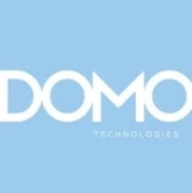

SSIS and Domo compete in the data integration and business intelligence category. Domo appears to have the upper hand due to its extensive features and versatility.
Features: SSIS is known for its integration capabilities and seamless connectivity within the Microsoft ecosystem, ideal for complex ETL processes. It provides a drag-and-drop interface, compatibility with SQL Server, and advanced data transformation options. Domo stands out with its robust data visualization capabilities, real-time analytics, and a wide range of connectors. It offers ease of use for non-technical users, drag-and-drop ETL tools, and Magic ETL for data manipulation.
Room for Improvement: SSIS could improve by enhancing its cloud integration capabilities, offering more intuitive interfaces, and expanding third-party connectors. Domo needs improvement in data transformation flexibility, could benefit from enhanced data security features, and should optimize its performance handling large datasets.
Ease of Deployment and Customer Service: Domo offers a cloud-based deployment model that simplifies implementation and provides strong customer support, minimizing IT overhead. SSIS, being on-premise, requires more technical expertise and resources for setup, making it less user-friendly without technical knowledge. While both offer customer support, Domo's cloud solution simplifies ongoing maintenance and support.
Pricing and ROI: SSIS generally has a lower upfront cost especially for organizations within the Microsoft ecosystem, making it an economical choice with a favorable ROI when integrating with existing infrastructure. Domo's pricing reflects its extensive feature set and capabilities, aiming for significant ROI through its diverse analytical tools. Despite higher costs, Domo’s comprehensive functionality provides long-term strategic value for enterprises seeking detailed insights.
Using SSIS has proven cost-effective as there are no additional fees outside the SQL Server license, and it significantly enhances data management efficiency.
While they eventually provide the correct answers, their support for smaller customers could be improved.
Sigma, which is written for Snowflake, scales more easily than Domo.
It processes large volumes of data quickly.
End users require a license to run their own reports and dashboards, which are fairly expensive.
Within the South African context, if you are getting your enterprise agreement from First Technology, they don't provide support.
SSIS has a difficult learning curve when dealing with complex transformations.
Domo is expensive compared to other solutions.
Utilizing SSIS involves no extra charges beyond the SQL Server license.
I have been using it for four years and have been able to extract the information I need from it.
SSAS is included in the base installation of SQL Server.
One of the best aspects of SSIS is that it is built into Microsoft SQL Server, so there are no additional costs involved.


Domo is a cloud-based, mobile-first BI platform that helps companies drive more value from their data by helping organizations better integrate, interpret and use data to drive timely decision making and action across the business. The Domo platform enhances existing data warehouse and BI tools and allows users to build custom apps, automate data pipelines, and make data science accessible for anyone through automated insights that can be shared with internal or external stakeholders.
Find more information on The Business Cloud Here.
SSIS is a versatile tool for data integration tasks like ETL processes, data migration, and real-time data processing. Users appreciate its ease of use, data transformation tools, scheduling capabilities, and extensive connectivity options. It enhances productivity and efficiency within organizations by streamlining data-related processes and improving data quality and consistency.
We monitor all Data Integration reviews to prevent fraudulent reviews and keep review quality high. We do not post reviews by company employees or direct competitors. We validate each review for authenticity via cross-reference with LinkedIn, and personal follow-up with the reviewer when necessary.